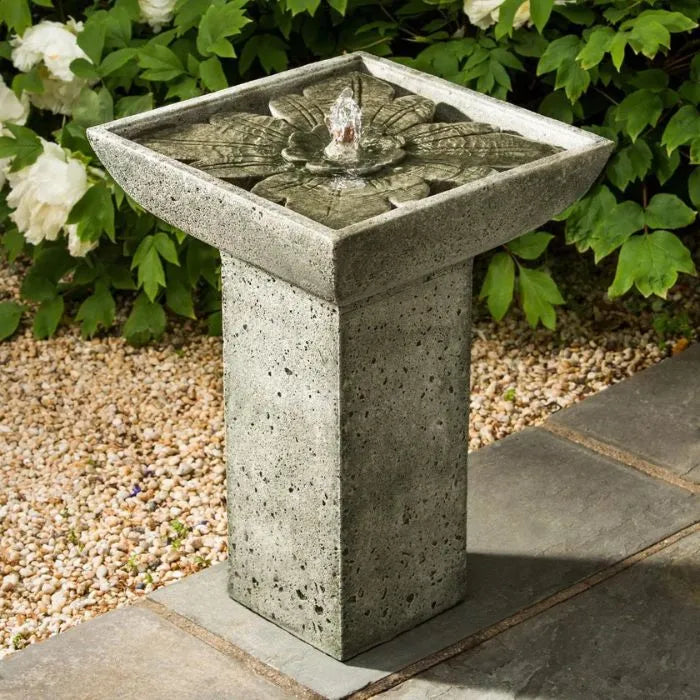Outdoor water fountains, those charming fixtures in gardens and parks, are more than just decorative elements; they are vibrant hubs of wildlife activity. Their ability to attract a diverse array of wildlife is not just a coincidence but a result of several key factors. Let's delve into why certain outdoor water fountains are particularly appealing to wildlife.
1. Integrating Natural Elements
The design of a fountain plays a crucial role in attracting wildlife. Fountains that incorporate natural materials like stone or wood blend seamlessly into the environment, making them more inviting to animals. These materials often mimic natural water sources, creating a sense of familiarity for wildlife. The sound of flowing water, reminiscent of a babbling brook or gentle stream, also plays a vital role in drawing animals, especially birds. Choose the right decorative elements to create a beautiful, cohesive space around your water fountain.
2. Varied Water Depths
Fountains with varying water depths cater to different species. Shallow areas are perfect for small birds and insects to bathe and drink, while deeper sections can attract larger birds and even small mammals. This variation in depth makes the fountain a one-stop destination for a diverse group of animals.
3. Crucial Hydration
Water is a fundamental necessity for all living creatures. In urban or landscaped areas, natural water sources may be scarce. An outdoor fountain serves as a critical hydration point for wildlife, especially during warmer months or in arid regions. The constant availability of clean, fresh water is a significant draw for animals.
4. Food Availability
Some outdoor fountains, particularly those with a variety of plants and aquatic life, become ecosystems in their own right. They attract insects, which in turn draw insectivorous birds and other animals. This chain reaction transforms the fountain into a bustling center of food activity, providing sustenance to a variety of wildlife.
5. Predation Safety
Safety is a top priority for animals. Outdoor water features located in areas with ample cover, such as bushes or trees, offer refuge for wildlife. These natural shields provide protection from predators, making the animals feel secure while they drink or bathe.
6. Nesting and Resting Spots
Some fountains offer ledges, crevices, or nearby trees that are ideal for nesting or resting. This feature is particularly attractive to birds. A safe and quiet place to rest is just as crucial as the availability of food and water.
7. Proximity to Habitats
The location of a water fountain is critical. Fountains situated near natural habitats or green corridors are more likely to attract wildlife. These locations provide easy access for animals and create a continuous natural environment for them to thrive.
8. Human Interaction
The level of human activity around an outdoor fountain also influences its attractiveness to wildlife. Quieter areas with less foot traffic are more appealing to animals, as they can visit without the stress of human disturbance.
Conclusion
In summary, the appeal of garden fountains to wildlife is multifaceted. The design that mimics natural elements, the provision of essential sustenance through water and food, the safety and shelter offered, and the strategic location all play a part in making certain fountains wildlife magnets. Understanding these aspects can guide the creation and maintenance of fountains that not only enhance the beauty of our outdoor spaces but also contribute significantly to local biodiversity. By creating these inviting spaces, we not only enjoy the aesthetic benefits but also play a role in supporting and nurturing the wildlife in our communities.

